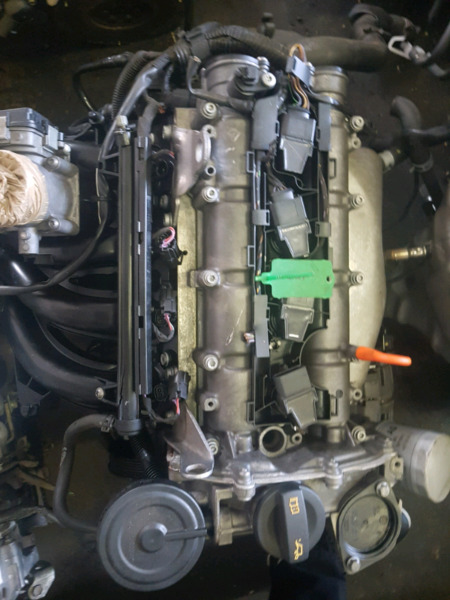Exactly How a Clp Engine Can Boost Efficiency in Different Industries
The introduction of CLP engines notes a significant change in functional efficiency across numerous sectors, driven by their ability to maximize fuel intake and decrease downtime. As companies increasingly focus on sustainability along with performance, the function of CLP engines becomes even much more crucial.
Overview of CLP Engines
CLP engines, or Constant Liquid Propellant engines, stand for a considerable innovation in propulsion innovation, especially for room applications. These engines make use of a constant feed system that allows for the continual expulsion of propellant, resulting in boosted effectiveness and performance compared to typical solid or hybrid propulsion systems. By keeping a continuous circulation of liquid propellant, CLP engines can attain more exact drive control, which is essential for steering spacecraft in different goal circumstances.
The style of CLP engines incorporates innovative materials and innovative fuel management systems. clp engine. This results in decreased weight and increased reliability, crucial aspects for long-duration room objectives. Furthermore, the constant procedure minimizes the danger of burning instability, an usual obstacle in conventional rocket engines.

Benefits in Manufacturing
The manufacturing of Continual Fluid Propellant (CLP) engines offers numerous notable benefits that boost both effectiveness and cost-effectiveness. One of the primary benefits is the structured manufacturing procedure, which minimizes the intricacy connected with conventional propulsion systems. By utilizing fluid propellant, suppliers can accomplish higher precision in engine performance, leading to optimized energy result and minimized waste.
Additionally, CLP engines facilitate a greater level of modularity, enabling easier assimilation into numerous production lines. This flexibility can considerably lower lead times and enhance general functional flexibility. Making use of CLP innovation additionally often tends to minimize the requirement for comprehensive maintenance due to fewer relocating components, which converts into lowered downtime and operational prices.

Applications in Logistics
Leveraging Continuous Liquid Propellant (CLP) engines in logistics provides considerable benefits in functional effectiveness and integrity. These engines give a durable remedy for numerous transport demands, making it possible for the smooth click here to find out more activity of goods across vast distances. The fundamental design of CLP engines allows for consistent power output, which converts right into smoother and extra foreseeable transportation schedules.
One of the key applications of CLP engines in logistics remains in sturdy products transportation, where they can drive both ground and aerial cars. Their ability to keep high efficiency under varying tons conditions ensures that distribution timelines are fulfilled, consequently improving customer complete satisfaction. Furthermore, CLP engines can be integrated into automated logistics systems, facilitating real-time monitoring and optimizing course preparation.
Additionally, the longevity of CLP engines lowers upkeep downtime, allowing logistics firms to maximize their operational capacities. This is specifically beneficial in warehousing procedures, where performance in taking care of and transporting items is essential. As logistics remains to develop, the assimilation of CLP engines represents a forward-thinking approach that not only improves performance yet likewise supports the market's growing demands for reliability and rate.
Influence On Power Efficiency
Just How do Continuous Fluid Propellant (CLP) engines boost energy performance in transportation? CLP engines make use of a consistent circulation of liquid gas, optimizing burning procedures and maintaining a secure drive outcome. This layout minimizes power losses associated with standard burning engines, where fuel distribution can vary and result in inadequacies.
The continuous operation of CLP engines permits for a more effective thermal cycle, causing higher certain impulse compared to traditional engines. clp engine. This equates to lowered fuel usage for the very same quantity of work done, significantly decreasing functional prices throughout numerous transportation fields, including air travel and maritime markets
In addition, the capacity of CLP engines to maintain ideal efficiency under varying load problems reduces the need for frequent velocity and slowdown, better check my reference enhancing gas efficiency. Improved power performance not just adds to set you back financial savings however likewise causes reduce greenhouse gas discharges, lining up with worldwide sustainability goals.
Future Trends and Innovations
Emerging advancements in Continuous Fluid Propellant (CLP) engine modern technology assurance to reinvent the landscape of transport performance and sustainability. As sectors pivot towards greener alternatives, CLP engines stand at the forefront, incorporating cutting-edge products and design approaches that enhance efficiency while lessening environmental impact.
Among one of the most appealing trends is the adoption of crossbreed systems that integrate CLP engines with renewable power sources. This synergy can maximize fuel consumption and lower discharges, aligning with international sustainability objectives. Furthermore, advancements in computational liquid dynamics (CFD) are facilitating the layout of more aerodynamically efficient engines, causing decreased drag and improved gas efficiency.
Moreover, the development of clever monitoring systems is established to enhance functional efficiencies. These systems take advantage of information analytics and IoT innovation to maximize engine performance recommended you read in real-time, making certain that the engines operate within their most reliable parameters.
As study continues to explore different propellant formulas-- such as biofuels and artificial fuels-- the future of CLP engines looks encouraging. By taking advantage of these innovations, markets can not just improve their performance however additionally contribute significantly to a cleaner, a lot more lasting future in transportation.
Conclusion
In final thought, CLP engines stand for a substantial development in effectiveness throughout numerous sectors. Their ability to optimize fuel usage and lower operational costs, integrated with a constant feed system, boosts power result and functional reliability. The integration of advanced materials and fewer moving components lessens upkeep needs, while alignment with sustainability goals positions CLP engines as a critical innovation for the future. Continued advancement in this area guarantees additional enhancements in effectiveness and environmental performance.